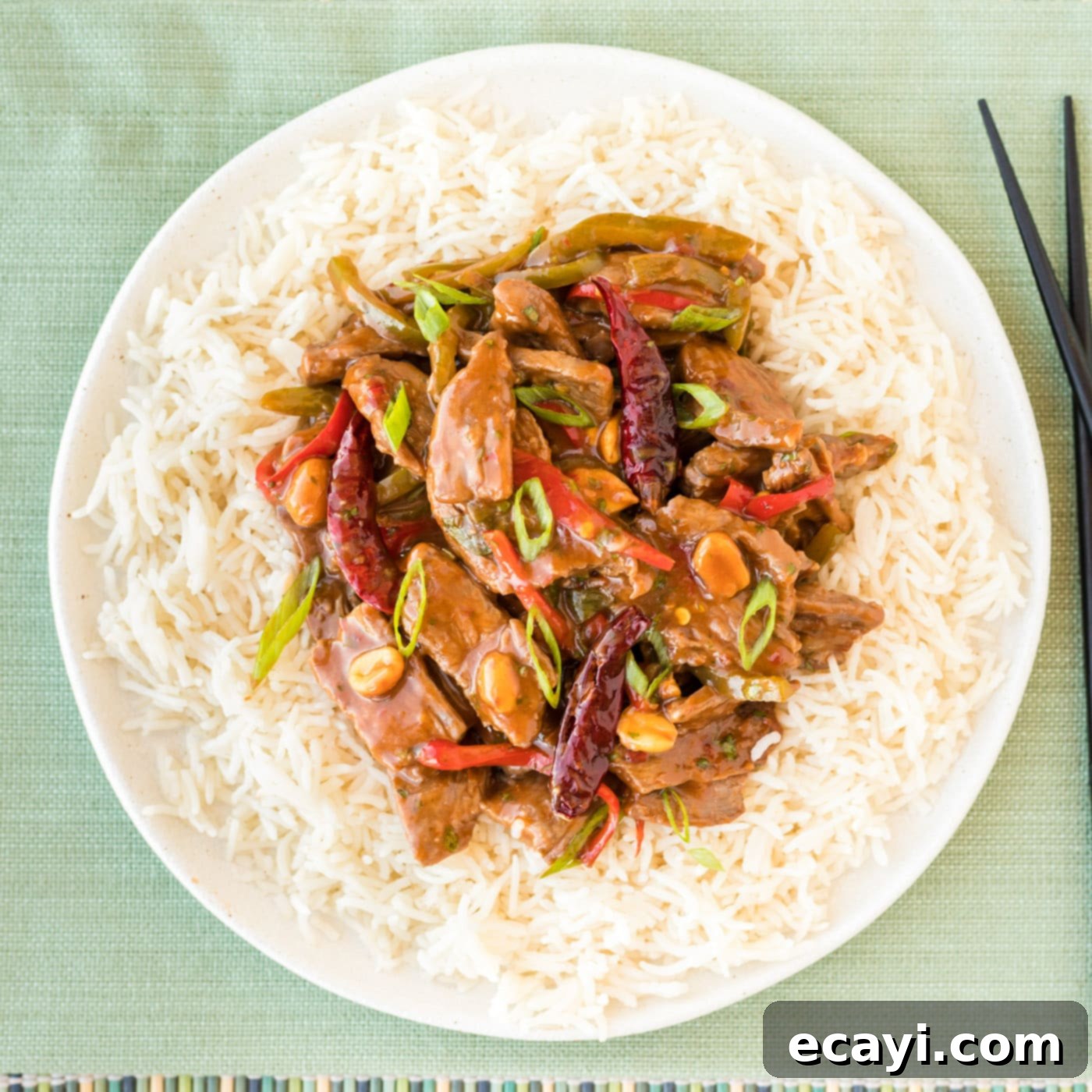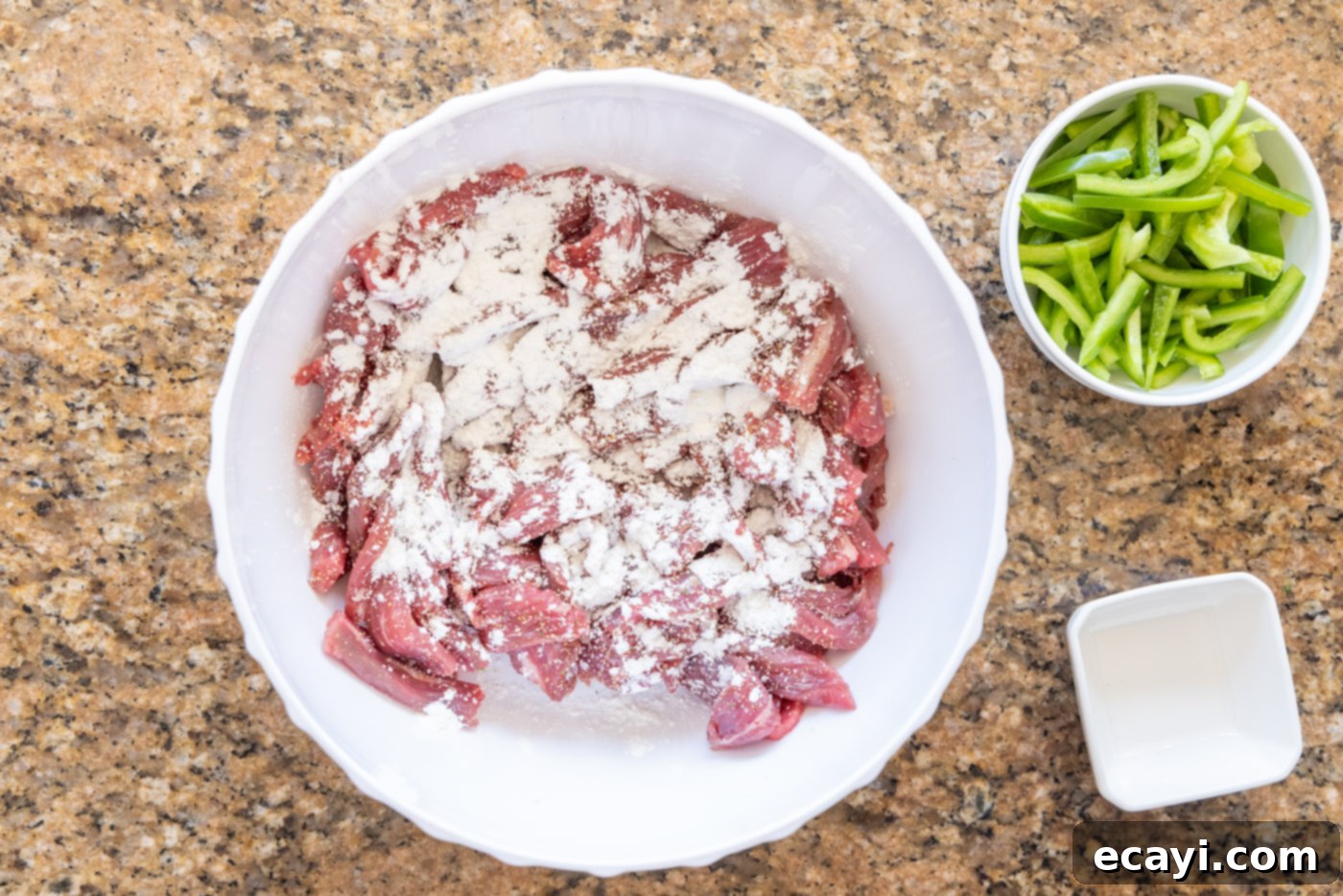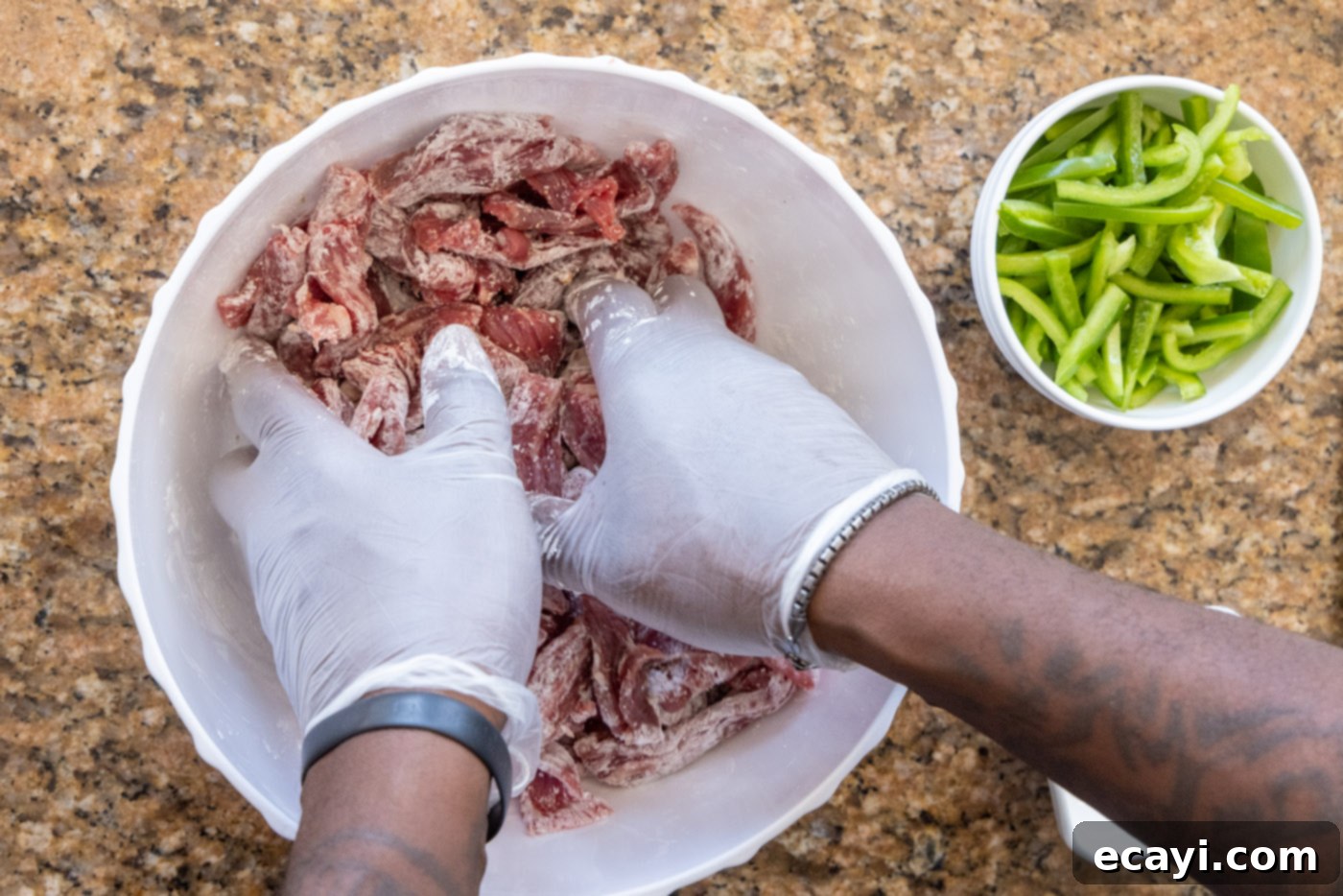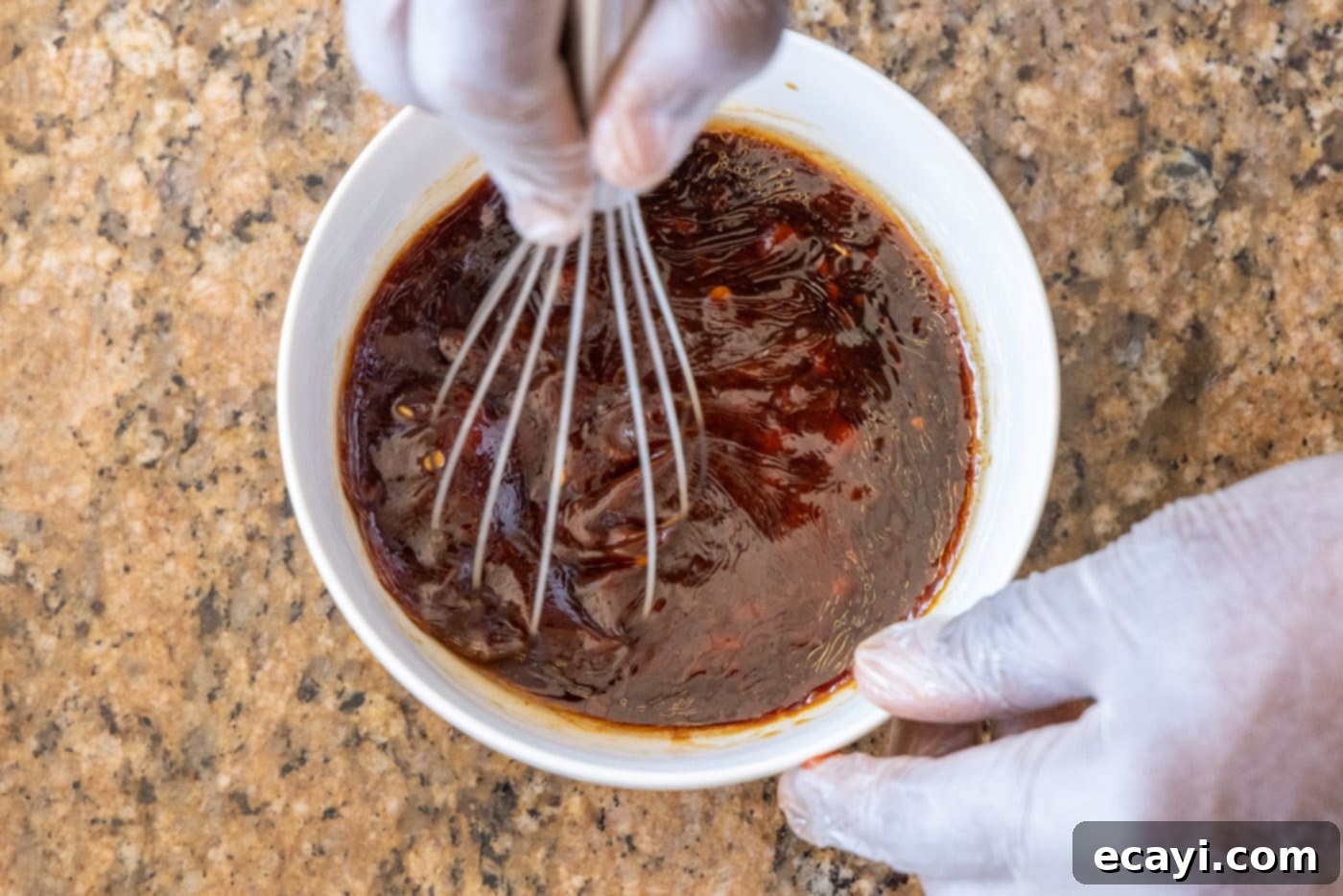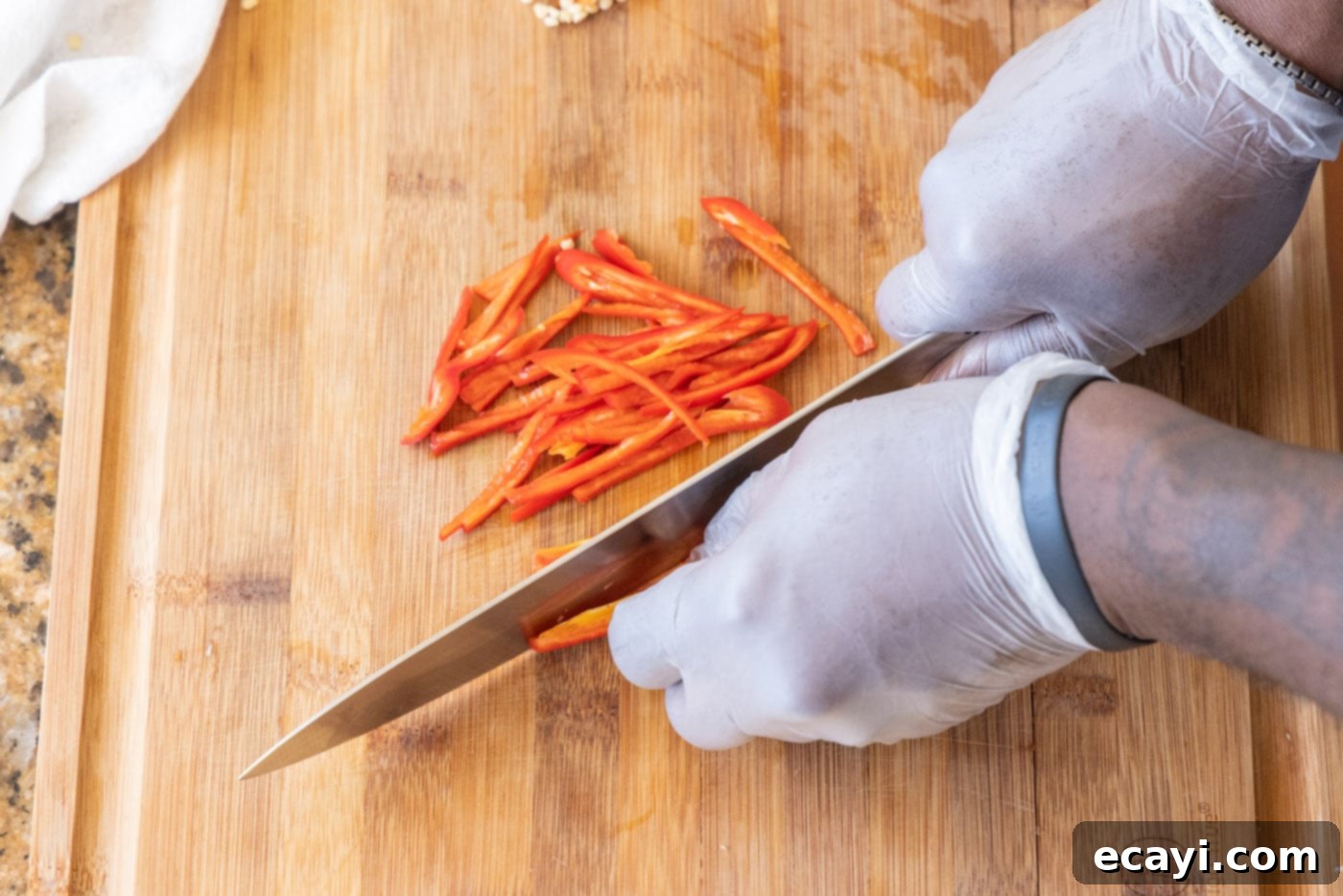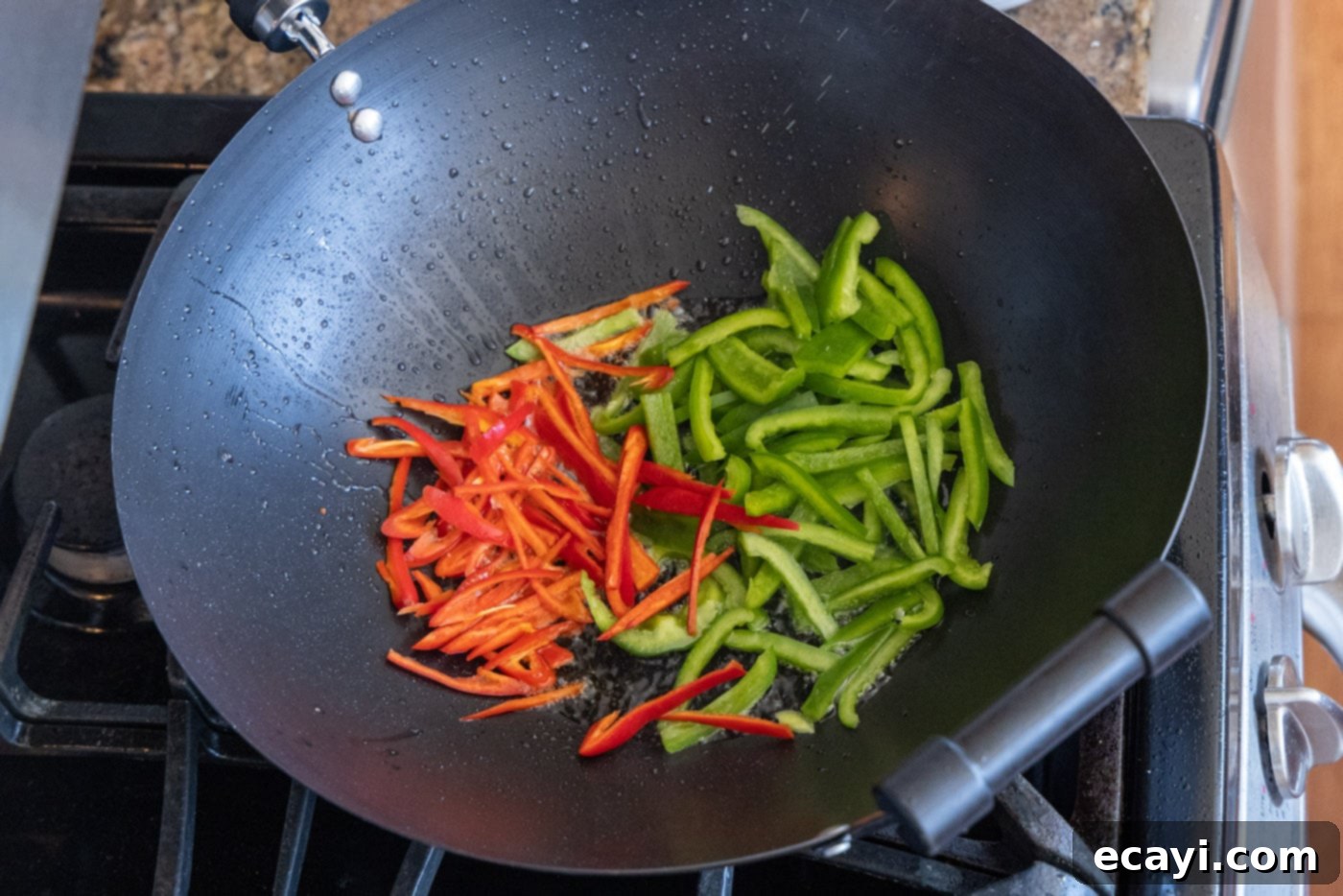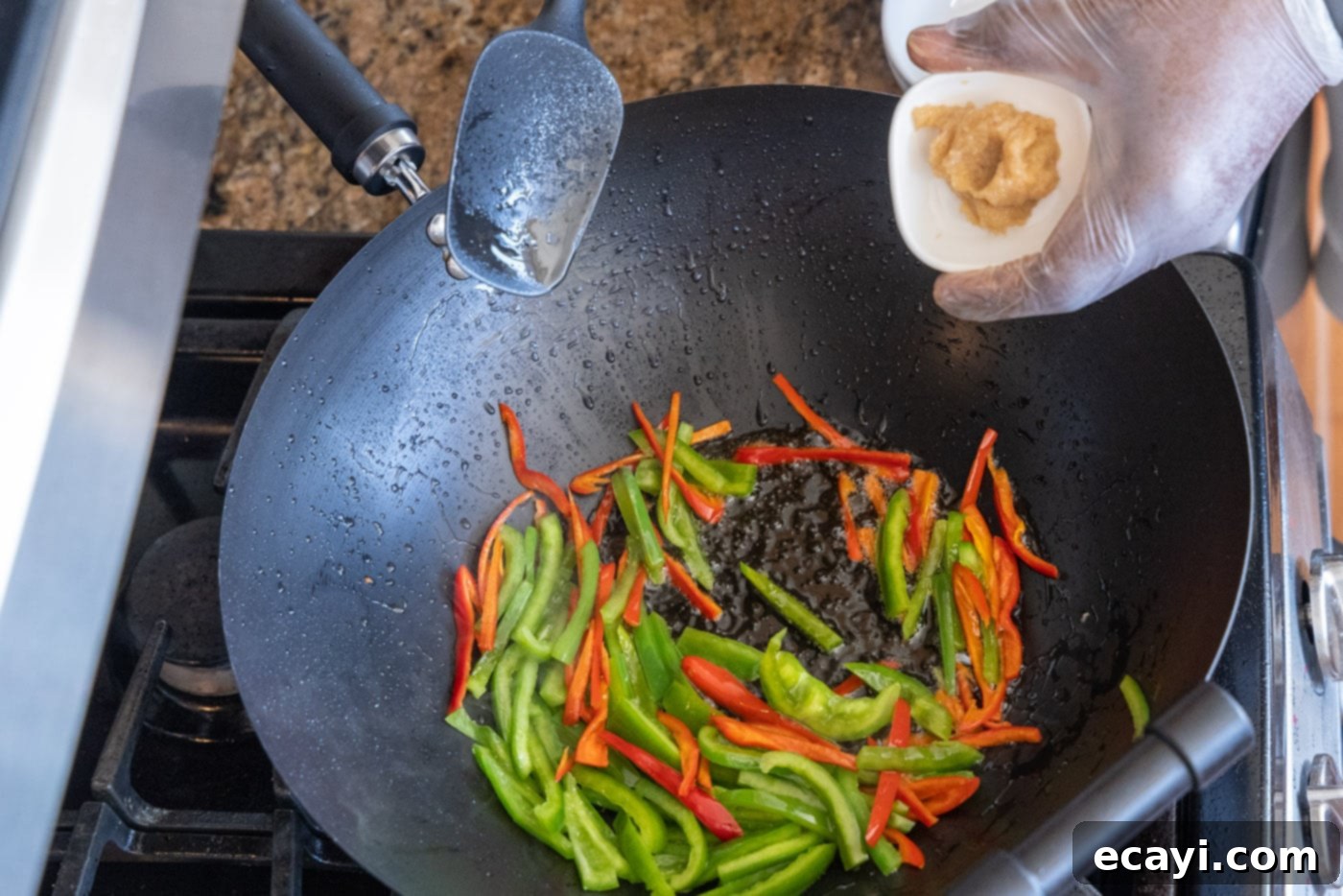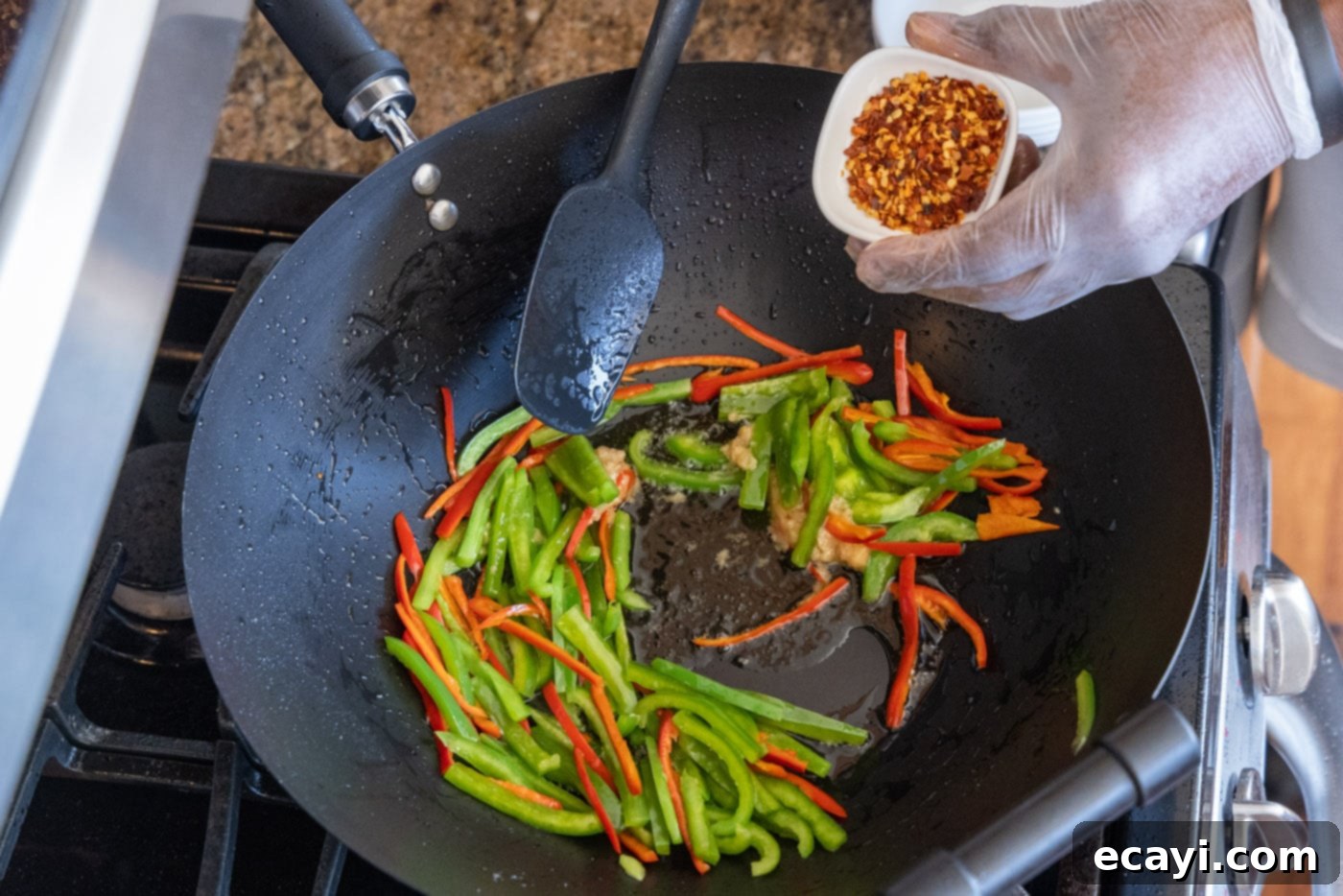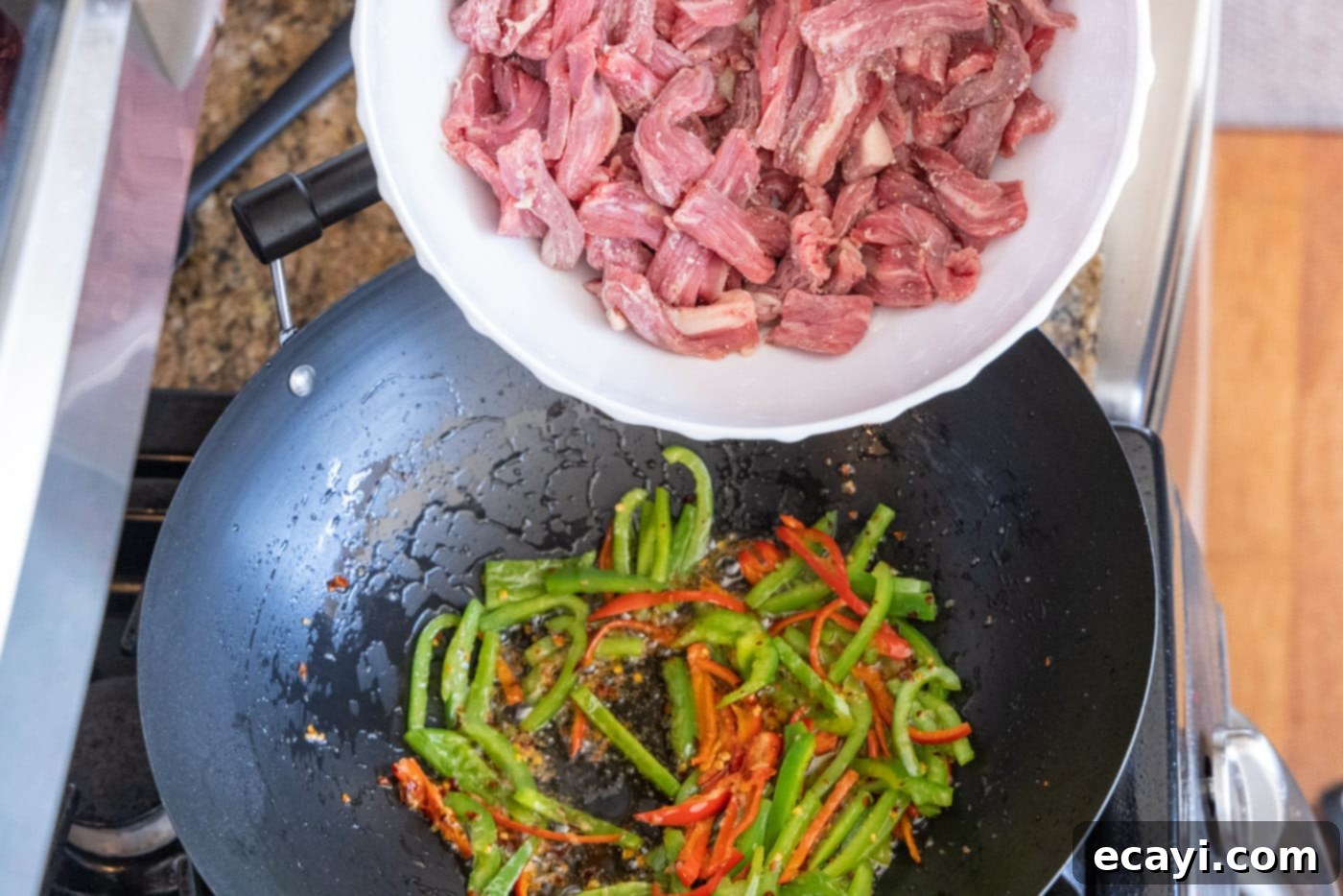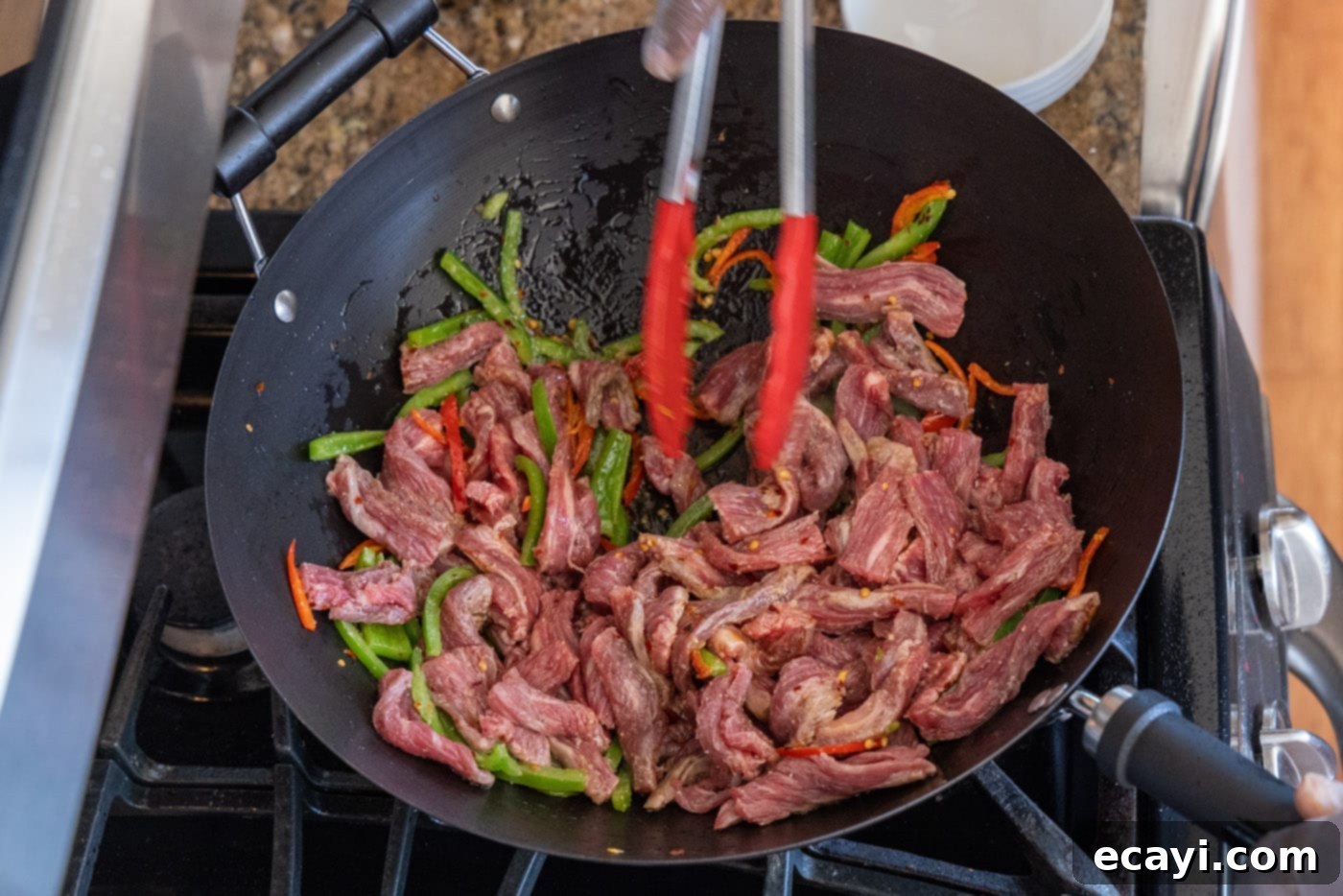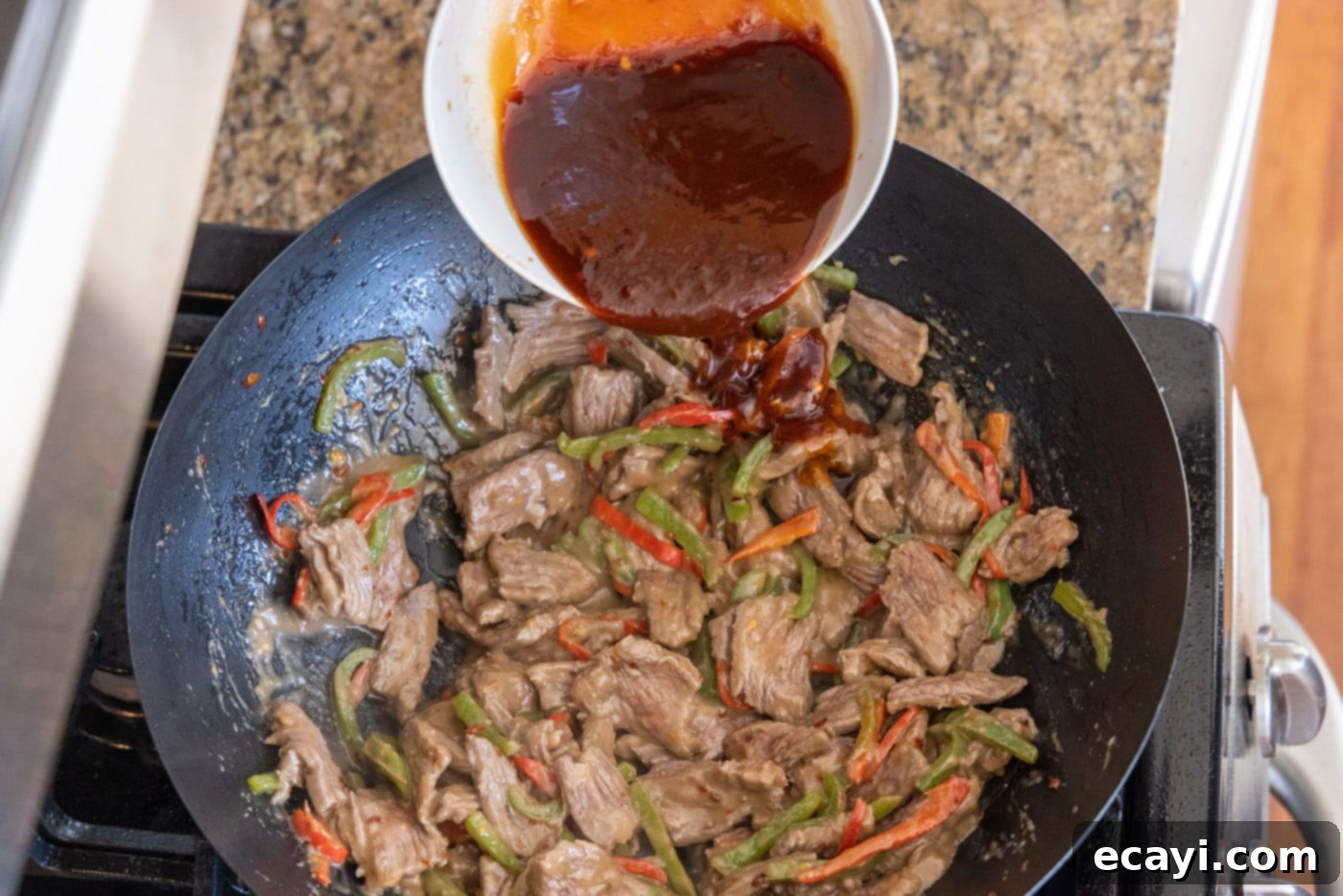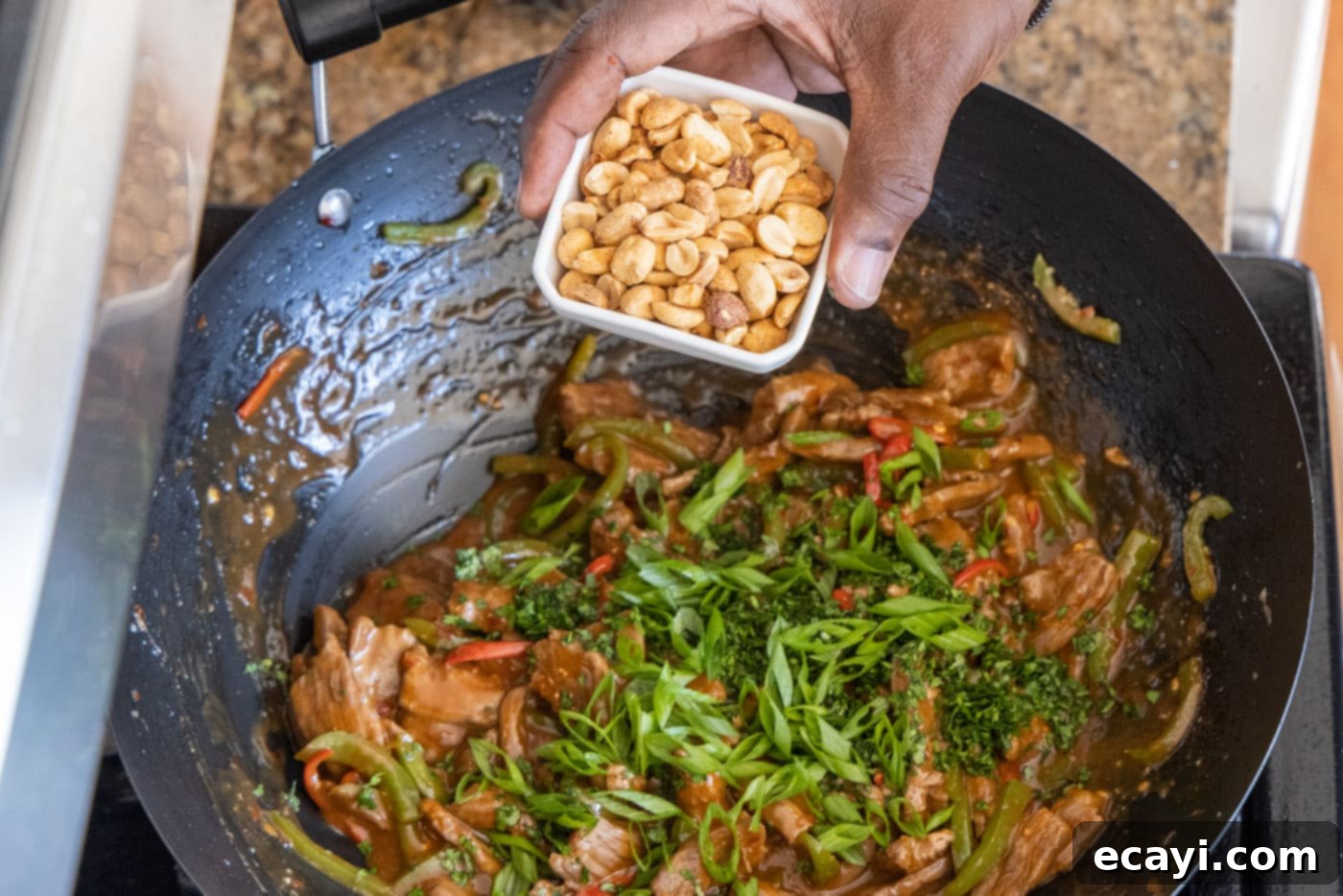Authentic and Easy Kung Pao Beef: A Flavorful Weeknight Stir-Fry Recipe
Embark on a culinary journey with this incredible Kung Pao Beef recipe, featuring thinly sliced flank steak, vibrant ginger, zesty jalapeños, crisp green peppers, and crunchy roasted peanuts. Every component is tossed in a rich, spicy, and savory sauce that promises an explosion of flavor in every bite. This homemade version of a Chinese takeout classic is not only quick to prepare but also delivers a depth of taste that will have you coming back for more.
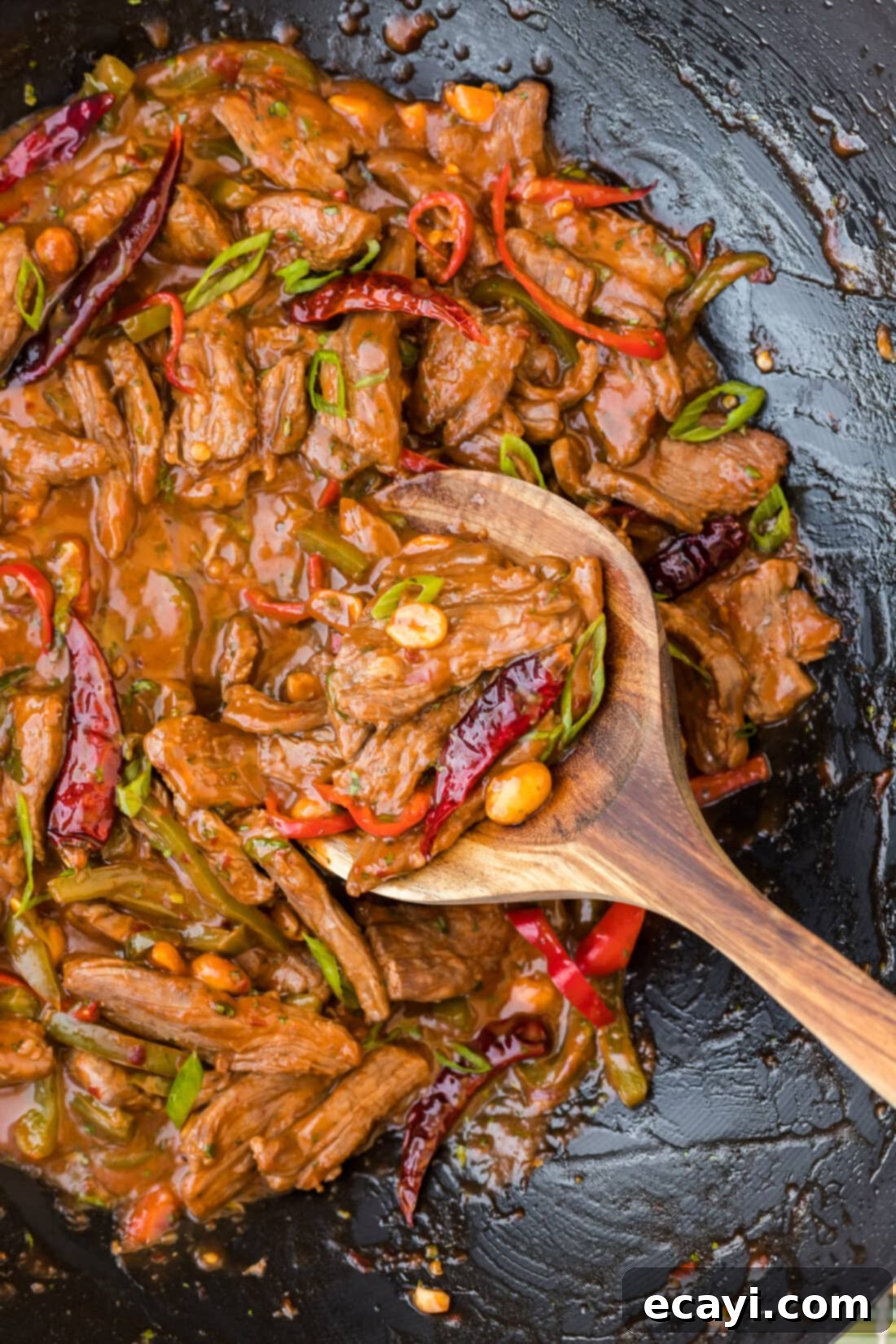
Why This Homemade Kung Pao Beef Recipe Works
Kung Pao Beef is a beloved spicy stir-fry dish, much like its popular cousin, Kung Pao Chicken, often enjoyed at local Chinese restaurants. Our rendition takes this classic to a new level by carefully balancing traditional elements with a few fresh twists, making it perfect for a delicious home-cooked meal.
One of the distinctive features of our recipe is the clever substitution of dried chilies or traditional Sichuan peppercorns with fresh red jalapeños. While dried chilies typically provide heat, jalapeños offer a vibrant, edible spice that contributes to the dish’s overall texture and fresh flavor profile. Combined with tender flank steak, fragrant ginger, fresh cilantro, aromatic green onions, and the satisfying crunch of roasted peanuts, this stir-fry creates a symphony of tastes and textures that is truly irresistible.
The secret to any great stir-fry lies in its sauce, and this Kung Pao Beef sauce is a showstopper. It’s a meticulously crafted blend of Asian garlic chili, ketchup, sesame garlic, premium soy sauce, and sweet Thai chili. This savory concoction doesn’t just add heat; it creates a complex flavor profile that is deeply umami, subtly sweet, and wonderfully spicy. The garlic chili provides a robust kick, ketchup adds a touch of tangy sweetness, sesame garlic offers nutty depth, soy sauce brings essential savory notes, and Thai sweet chili rounds it out with a balanced sweetness and mild heat. This combination ensures that every morsel of beef and vegetable is coated in an intensely flavorful glaze, elevating this dish far beyond your average takeout experience.
Furthermore, this recipe is designed for efficiency and maximum flavor. Stir-frying is an inherently fast cooking method, perfect for busy weeknights. By prepping all your ingredients beforehand, you can have a gourmet-quality meal on the table in under 40 minutes. The tenderizing cornstarch coating on the beef ensures a silky texture, while the high-heat cooking locks in juices and flavors. This thoughtful approach makes our Kung Pao Beef a consistently successful and deeply satisfying dish for any home cook.
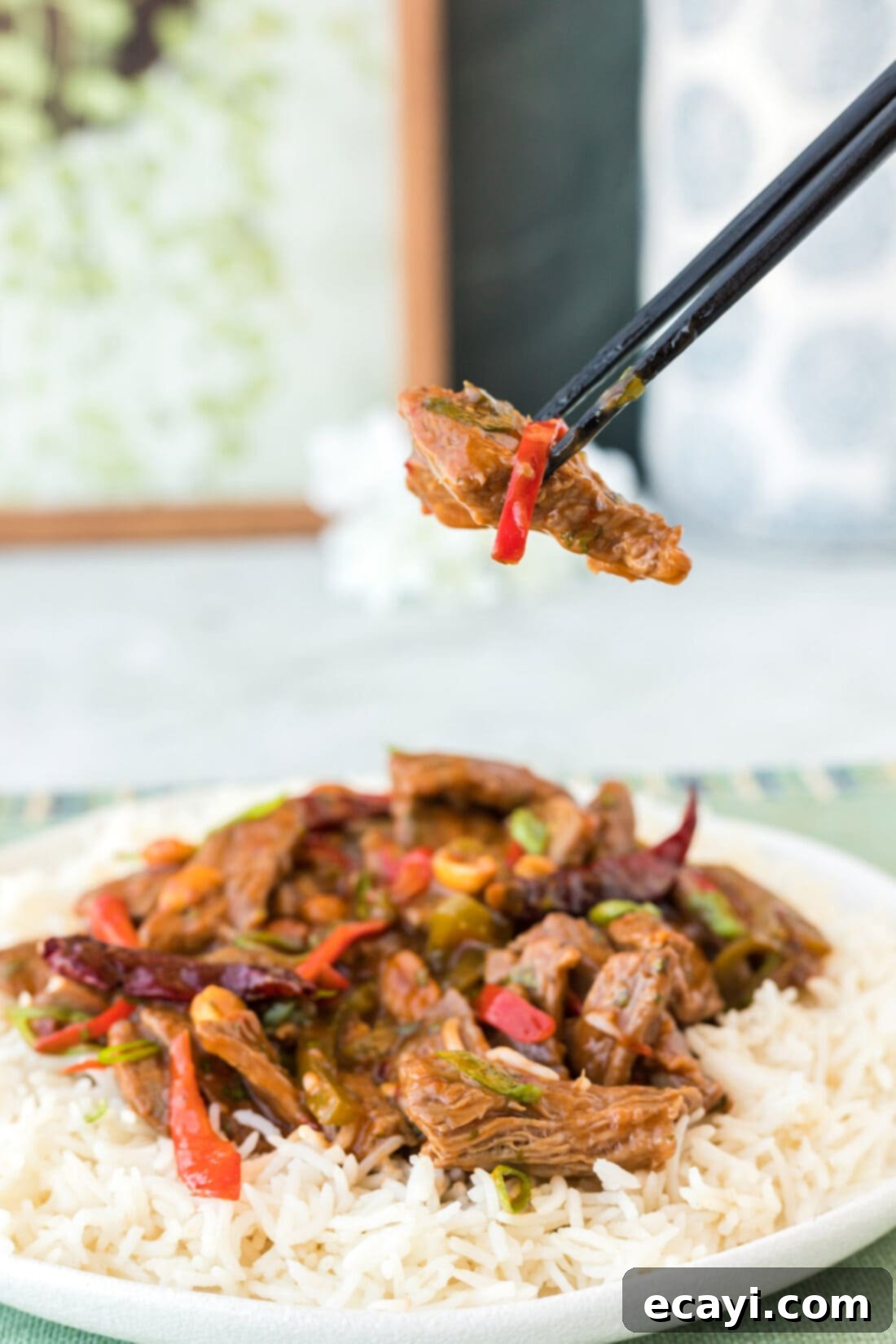
Key Ingredients You Will Need to Make Kung Pao Beef
Before diving into the cooking process, gathering all your ingredients (mise en place) is crucial for a smooth and efficient stir-fry experience. This recipe calls for a mix of fresh produce, quality proteins, and essential Asian pantry staples that contribute to its authentic and vibrant flavor. You can find all specific measurements, ingredients, and detailed instructions in the printable recipe card at the very end of this post.
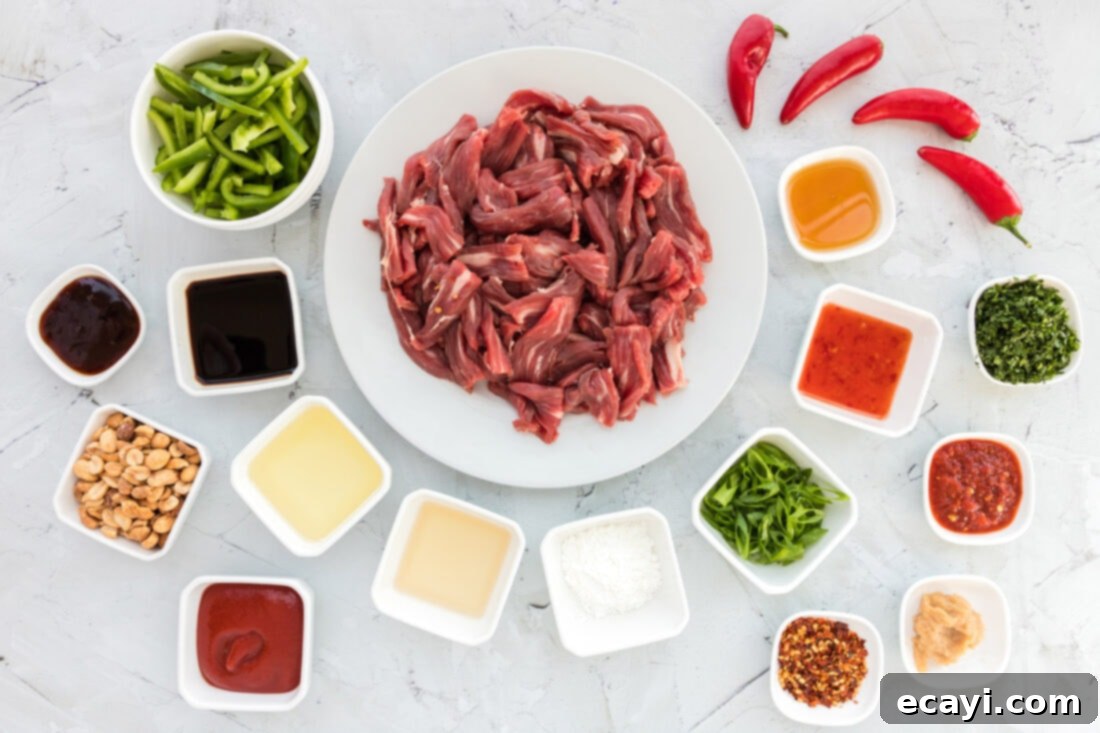
Ingredient Information and Substitution Suggestions
Understanding each ingredient’s role and potential substitutions can help you customize this Kung Pao Beef to your personal taste and dietary needs.
BEEF: We highly recommend using flank steak for this recipe due to its excellent flavor and texture when sliced thinly and cooked quickly. It’s a lean cut that benefits from proper slicing. Always slice flank steak *against the grain* to ensure maximum tenderness. Cutting against the grain shortens the muscle fibers, preventing the meat from becoming chewy. If flank steak isn’t available, other great options include skirt steak, sirloin steak, or even beef tenderloin, all sliced very thin. For an extra tender result, a quick marinade with a touch of baking soda (about 1/4 teaspoon per pound) can work wonders, alongside the cornstarch coating.
CORNSTARCH: This humble ingredient plays a dual role in our Kung Pao Beef. First, it acts as a tenderizer for the flank steak, a technique known as “velveting” in Chinese cooking. The cornstarch coating creates a protective layer that locks in moisture during cooking, resulting in incredibly tender beef. Second, it helps to slightly thicken the sauce, ensuring it coats every piece of beef and vegetable beautifully. Do not skip this step for the best texture!
PEPPERS: Our recipe uniquely utilizes red jalapeño peppers instead of the more traditional dried chilies or Sichuan peppercorns. We prefer fresh jalapeños because they offer a bright, fruity heat and are fully edible, adding texture and freshness to the stir-fry. Red jalapeños are simply green jalapeños that have been allowed to ripen longer on the vine, which typically makes them slightly sweeter and often spicier due to increased capsaicin development. If you opt for dried chili peppers, remember to soak them in warm water for about 15 minutes before draining and adding them to the wok; this softens them and helps release their flavor without burning. For those who crave the unique numbing sensation (ma la) characteristic of authentic Sichuan cuisine, you can certainly add about 1 to 1½ teaspoons of Sichuan peppercorns, crushed, or a pinch of Sichuan peppercorn powder along with the ginger and red pepper flakes. For a milder version, green bell peppers or even sweet red bell peppers can be used alongside a smaller amount of jalapeños.
AROMATICS (GINGER & GARLIC): Freshly chopped ginger is non-negotiable for that signature aromatic kick. While not explicitly listed as a separate ingredient in the main list, the “Asian garlic chili” and “sesame garlic” in the sauce ensure a robust garlic presence. For an even more potent garlic flavor, feel free to add 1-2 cloves of minced fresh garlic directly to the wok with the ginger. Always use fresh ingredients for the best flavor.
PEANUTS: Dry roasted peanuts are essential for the classic Kung Pao crunch and nutty flavor. They provide a delightful textural contrast to the tender beef and crisp vegetables. Ensure they are unsalted or adjust the soy sauce accordingly if using salted peanuts.
FRESH HERBS (CILANTRO & GREEN ONIONS): Freshly chopped cilantro and sliced green onions are added at the very end to provide a burst of freshness and vibrant color. They brighten up the rich flavors of the stir-fry. If you’re not a fan of cilantro, simply omit it or substitute with a little fresh parsley.
THE SAUCE: This is where the magic happens!
- Sesame Oil: Adds a deep, nutty aroma and flavor. Use toasted sesame oil for maximum impact.
- Asian Garlic Chili: A key component for heat and savory garlic notes. Adjust to your preferred spice level. Sriracha can be a substitute, but Asian garlic chili usually has more texture and a richer flavor.
- Ketchup: This might seem unconventional, but it adds a subtle sweetness, tang, and a rich umami depth that is surprisingly common in many Chinese-American dishes, providing body to the sauce.
- Sesame Garlic: Further enhances the savory, garlicky, and nutty profile. This is often a paste or sauce; if you don’t have it, a mix of toasted sesame seeds and minced garlic can be a close alternative.
- Soy Sauce: The backbone of the savory flavor. Use a good quality regular soy sauce. For a gluten-free option, tamari works perfectly. Low-sodium soy sauce is also a good choice to control the saltiness.
- Thai Sweet Chili: Contributes a delightful balance of sweet and mild heat, adding another layer of complexity to the sauce. If unavailable, a mix of sweet chili sauce and a pinch of red pepper flakes can substitute.
- Rice Vinegar: Provides a crucial acidic balance to cut through the richness and brighten the overall flavor. Use unseasoned rice vinegar for the best results.
By understanding these ingredients, you can confidently prepare this delicious Kung Pao Beef, knowing you have the flexibility to adapt it while maintaining its fantastic taste.
How to Make Kung Pao Beef: Step-by-Step Guide
These step-by-step photos and instructions are here to help you visualize how to make this recipe. For the complete printable version of this recipe, including exact measurements and detailed instructions, please Jump to Recipe at the bottom of this post.
Achieving a perfect stir-fry means having all your ingredients prepped and ready to go before you even turn on the heat. This technique, known as “mise en place,” ensures a smooth and quick cooking process, preventing anything from overcooking while other components are still being prepared.
- Prepare the Beef: Begin by thinly slicing your flank steak against the grain. This is a critical step for tender beef! Aim for slices about 1/4 inch thick. Place the sliced beef in a large bowl. Sprinkle cornstarch evenly over the meat. Using gloved hands, thoroughly combine the cornstarch with the beef. The cornstarch will create a light coating that helps tenderize the meat and allows it to achieve a beautiful sear. Set the beef aside to rest while you prepare the sauce and chop your vegetables.


- Whisk the Sauce: In a medium bowl, combine all the sauce ingredients: sesame oil, Asian garlic chili, ketchup, sesame garlic, soy sauce, Thai sweet chili, and rice vinegar. Whisk vigorously until all ingredients are well combined and the sauce has a uniform consistency. Set this flavorful sauce aside.

- Prepare the Peppers: Slice your green pepper and red jalapeño peppers into thin strips. For the jalapeños, if you prefer less heat, remove the pith and seeds before slicing. The pith and seeds contain the highest concentration of capsaicin, which is responsible for the pepper’s spiciness.

- Heat the Wok: Add vegetable oil to your wok (or a large, heavy-bottomed skillet if you don’t have a wok) and heat it over medium-high heat. The key to a great stir-fry is a very hot cooking surface. The oil should be hot and shimmering, almost to the point of lightly smoking, before you add any ingredients. This high heat ensures quick cooking and prevents the vegetables from steaming instead of stir-frying.
- Stir-Fry Peppers: Add the prepared green pepper and red jalapeño pepper strips to the hot oil. Stir-fry them for about 2 minutes. You want them to soften slightly but still retain a crisp-tender texture. The vibrant colors should remain.

- Add Aromatics and Spice: Next, add the chopped ginger and red pepper flakes to the wok with the peppers. Toss everything together and cook for an additional 1 minute, allowing the ginger to become fragrant and the red pepper flakes to release their heat and flavor.


- Cook the Beef: Push the vegetables to one side of the wok to create space, or remove them temporarily if your wok is crowded. Add the cornstarch-coated flank steak to the hot wok in a single layer if possible. Stir-fry the meat for approximately 5-6 minutes, or until most of the pink color is gone and the beef is nicely browned. Be careful not to overcrowd the wok, as this can lower the temperature and cause the beef to steam rather than sear. Cook in batches if necessary.


- Combine with Sauce: Once the beef is cooked, pour the whisked sauce directly into the wok. Stir immediately and continuously to combine the sauce with the meat and vegetables. The sauce will begin to thicken almost instantly due to the cornstarch on the beef, creating a glossy coating.

- Add Fresh Garnishes: Add the chopped fresh cilantro, sliced green onions, and dry roasted peanuts to the wok. Stir everything gently to combine, allowing the fresh flavors and textures to meld with the hot stir-fry.

- Finish Cooking: Reduce the heat to medium-low and continue to cook for an additional 3-4 minutes. This final simmer allows the flavors to deepen and the sauce to fully coat all the ingredients. Taste and adjust seasoning if necessary. Serve hot and enjoy your homemade Kung Pao Beef!
Frequently Asked Questions & Expert Tips for Kung Pao Beef
To ensure your Kung Pao Beef remains fresh and flavorful, store any leftovers in an airtight container. Place the container in the refrigerator promptly after cooling to room temperature. It will keep well for 3-4 days. For longer storage, you can freeze it in a freezer-safe container for up to 2-3 months. Thaw overnight in the refrigerator before reheating.
For best results, reheat your leftover Kung Pao Beef on the stovetop. Simply heat a wok or skillet over medium heat, add a teaspoon of oil, then add the beef mixture. Stir-fry for a few minutes until heated through. If the sauce has thickened too much or appears dry, add a dash of water or chicken broth (1-2 tablespoons) to loosen it up and restore its original consistency. You can also reheat it in the microwave in short bursts, stirring occasionally, but be careful not to overcook the beef, which can make it tough.
Absolutely! Advance preparation is key to making stir-fries quick and easy. You can slice the flank steak and coat it with cornstarch, storing it covered in the refrigerator for up to 24 hours. The sauce can be whisked together and stored in an airtight container in the fridge for up to 3 days. All vegetables, including slicing the peppers, chopping ginger, cilantro, and green onions, can be done a day ahead and kept refrigerated. This ‘mise en place’ will make cooking day a breeze!
Customizing the spice level is simple. For less heat, use fewer red jalapeños or make sure to thoroughly remove all seeds and pith. You can also swap out one red jalapeño for a milder green bell pepper. For a spicier dish, increase the amount of Asian garlic chili in the sauce, add more red pepper flakes, or include a pinch of crushed Sichuan peppercorns for that unique tingling sensation. Always taste as you go!
While a wok is ideal for stir-frying due to its high heat retention and curved shape that allows for even cooking and tossing, it’s not strictly necessary. A large, heavy-bottomed skillet or a cast-iron pan will work well too. The key is to get your pan very hot and avoid overcrowding it, which can reduce the temperature and lead to steaming rather than searing. If using a skillet, you might need to cook the beef and vegetables in smaller batches to achieve proper browning.
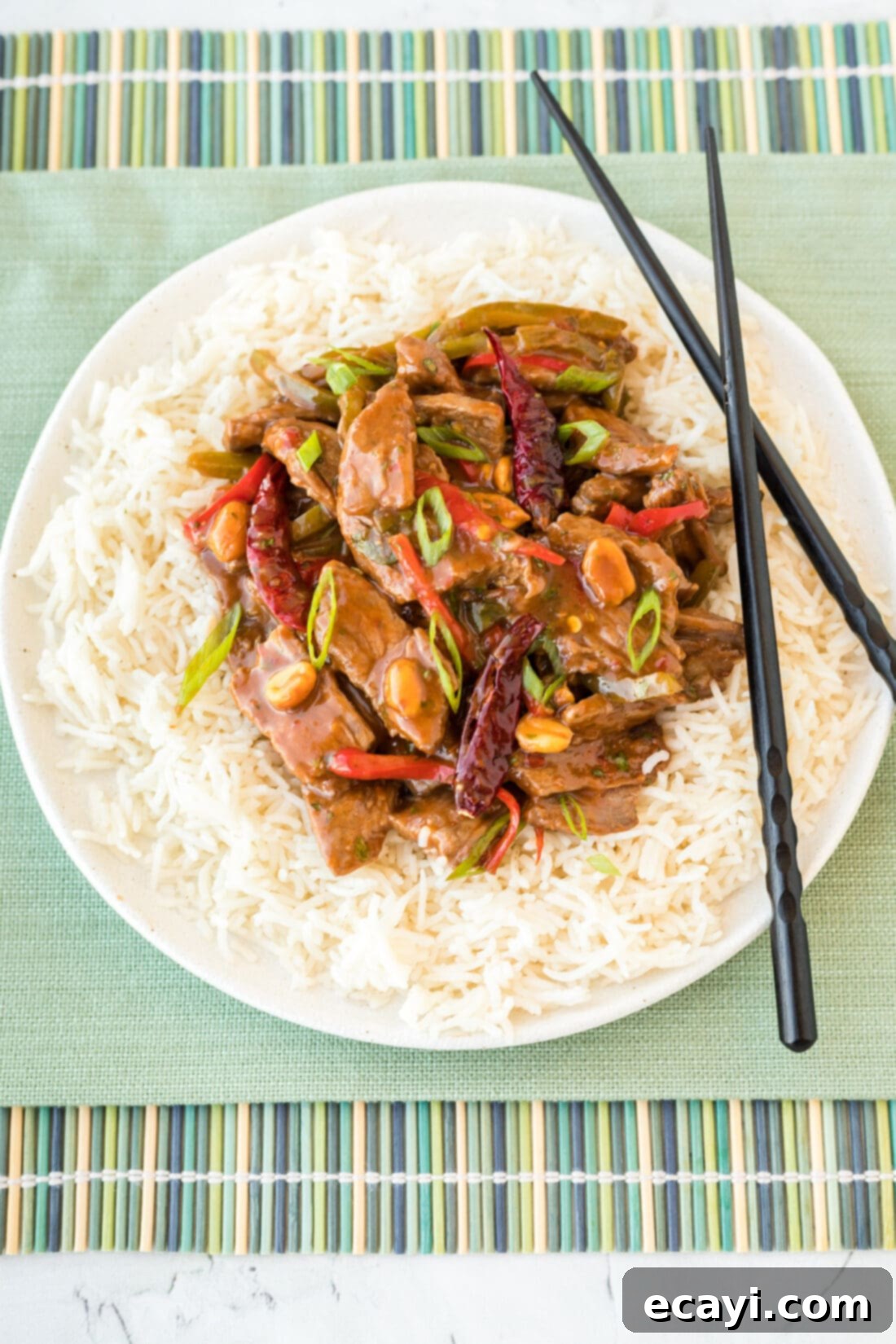
Serving Suggestions for Your Delicious Kung Pao Beef
Kung Pao Beef is a complete meal on its own, but it pairs wonderfully with a variety of sides to round out your dining experience. The most classic accompaniment is a generous bed of fluffy white rice, such as jasmine or basmati, which perfectly absorbs the rich, spicy sauce. For a healthier option, consider brown rice or even quinoa. If you prefer noodles, serving it over lo mein or rice vermicelli noodles creates another fantastic texture and flavor combination.
Feel free to customize the vegetables in your stir-fry to suit your preferences or whatever you have on hand. Beyond green peppers, other excellent additions or substitutions include crisp sugar snap peas, vibrant red or yellow bell peppers for extra sweetness, crunchy broccoli florets, tender bok choy, sliced carrots, water chestnuts, or bamboo shoots. These vegetables not only add color and texture but also boost the nutritional value of your meal. A sprinkle of extra roasted peanuts or fresh sesame seeds just before serving can add another layer of crunch and visual appeal. Enjoy this flavorful and versatile dish!
More Related Asian-Inspired Recipes You’ll Love
- Szechuan Beef
- Mongolian Beef
- General Tso Chicken
- Stir Fried Spicy Beef
- Chinese Pepper Steak
I love to bake and cook and share my kitchen experience with all of you! Remembering to come back each day can be tough, that’s why I offer a convenient newsletter every time a new recipe posts. Simply subscribe and start receiving your free daily recipes!
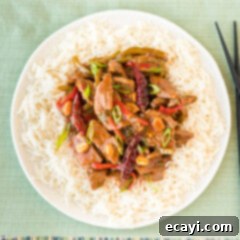
Kung Pao Beef
IMPORTANT – There are often Frequently Asked Questions within the blog post that you may find helpful. Simply scroll back up to read them!
Print It
Pin It
Rate It
Save ItSaved!
Ingredients
- 1 ½ pounds flank steak
- 1 ½ Tablespoons cornstarch
- 3 Tablespoons vegetable oil
- 4 red jalapeno peppers julienned
- 1 medium green pepper julienned
- 2 teaspoons chopped ginger
- 1 Tablespoon red pepper flakes
- 2 Tablespoons chopped fresh cilantro
- ½ cup sliced green onions
- ½ cup dry roasted peanuts
Sauce
- 1 Tablespoon sesame oil
- 1 Tablespoon Asian garlic chili
- 3 Tablespoons ketchup
- 1 Tablespoon sesame garlic
- 4 Tablespoons soy sauce
- 2 Tablespoons Thai sweet chili
- 1 ½ Tablespoons rice vinegar
Things You’ll Need
-
Wok
-
Large mixing bowl
-
Vinyl gloves
Before You Begin
- We chose to use red Jalapeno peppers instead of dried chilies. If using dried chili peppers, you can soak them in water for about 15 minutes before draining and adding them to the wok. We like using the jalapeños because they can be eaten rather than just being used for heat like dried chilies.
- Store leftovers in an air-tight container kept in the refrigerator for 3-4 days. Reheat in the microwave, adding a dash of water to loosen it up if needed.
Instructions
-
Slice flank steak thin against the grain. Place sliced beef in a large bowl and sprinkle cornstarch over the meat. Using gloved hands, combine cornstarch with the meat and set aside while you make the sauce.
-
In a medium bowl, combine all sauce ingredients and whisk together until combined well.
-
Cut green pepper and red Jalapeno peppers into strips, removing pith and seeds.
-
Add vegetable oil to wok and heat over medium-high until hot and shimmering.
-
Add green pepper and red Jalapeno pepper strips to the hot oil and stir fry for 2 minutes.
-
Add ginger and red pepper flakes, tossing with peppers, cooking for about 1 minute.
-
Add meat to the wok and stir fry for approximately 5-6 minutes until most pink is gone.
-
Pour sauce into the wok and stir to combine with meat and vegetables.
-
Add cilantro, green onion, and peanuts and stir to combine.
-
Reduce heat to medium and cook for an additional 3-4 minutes.
Nutrition
The recipes on this blog are tested with a conventional gas oven and gas stovetop. It’s important to note that some ovens, especially as they age, can cook and bake inconsistently. Using an inexpensive oven thermometer can assure you that your oven is truly heating to the proper temperature. If you use a toaster oven or countertop oven, please keep in mind that they may not distribute heat the same as a conventional full sized oven and you may need to adjust your cooking/baking times. In the case of recipes made with a pressure cooker, air fryer, slow cooker, or other appliance, a link to the appliances we use is listed within each respective recipe. For baking recipes where measurements are given by weight, please note that results may not be the same if cups are used instead, and we can’t guarantee success with that method.
